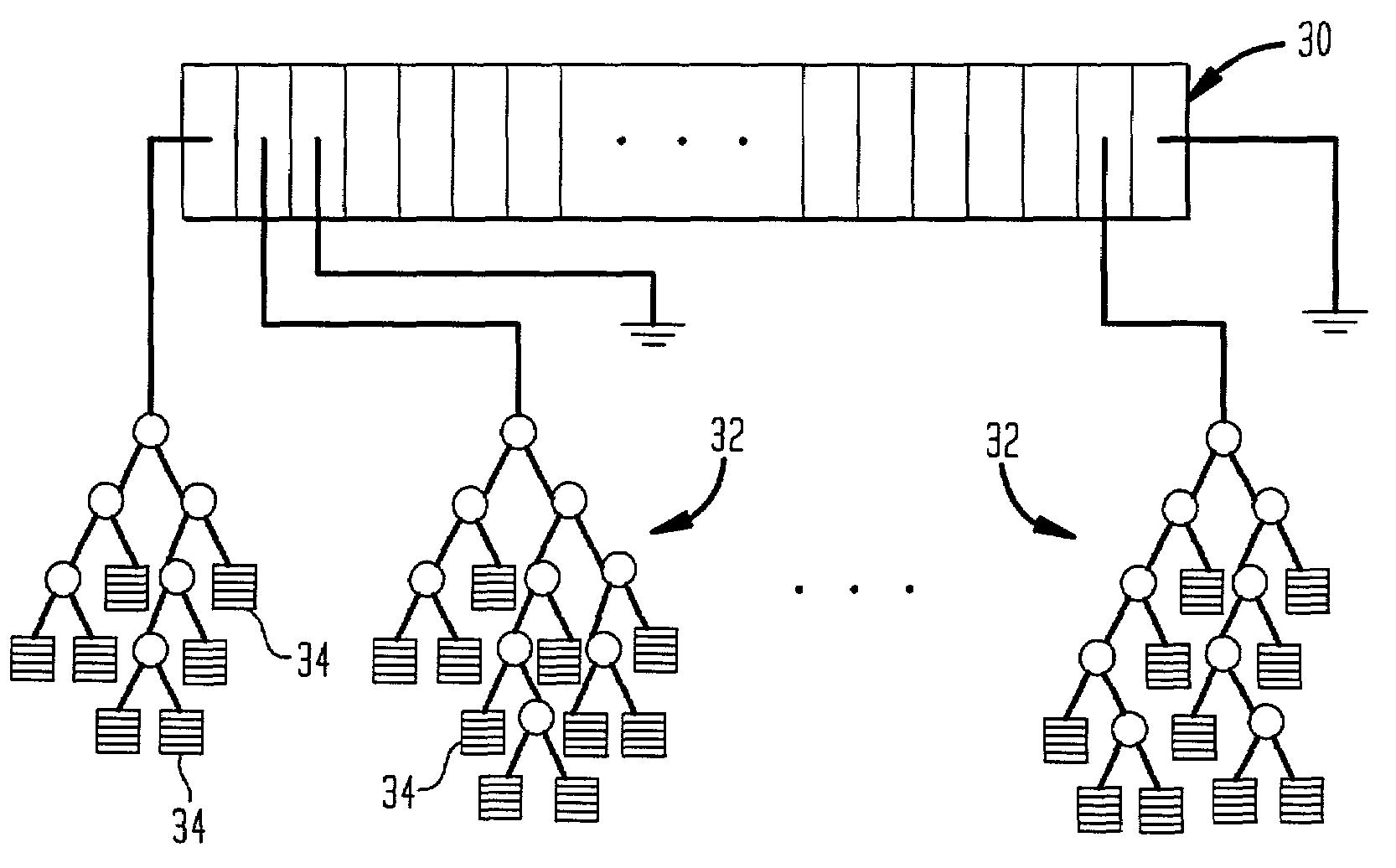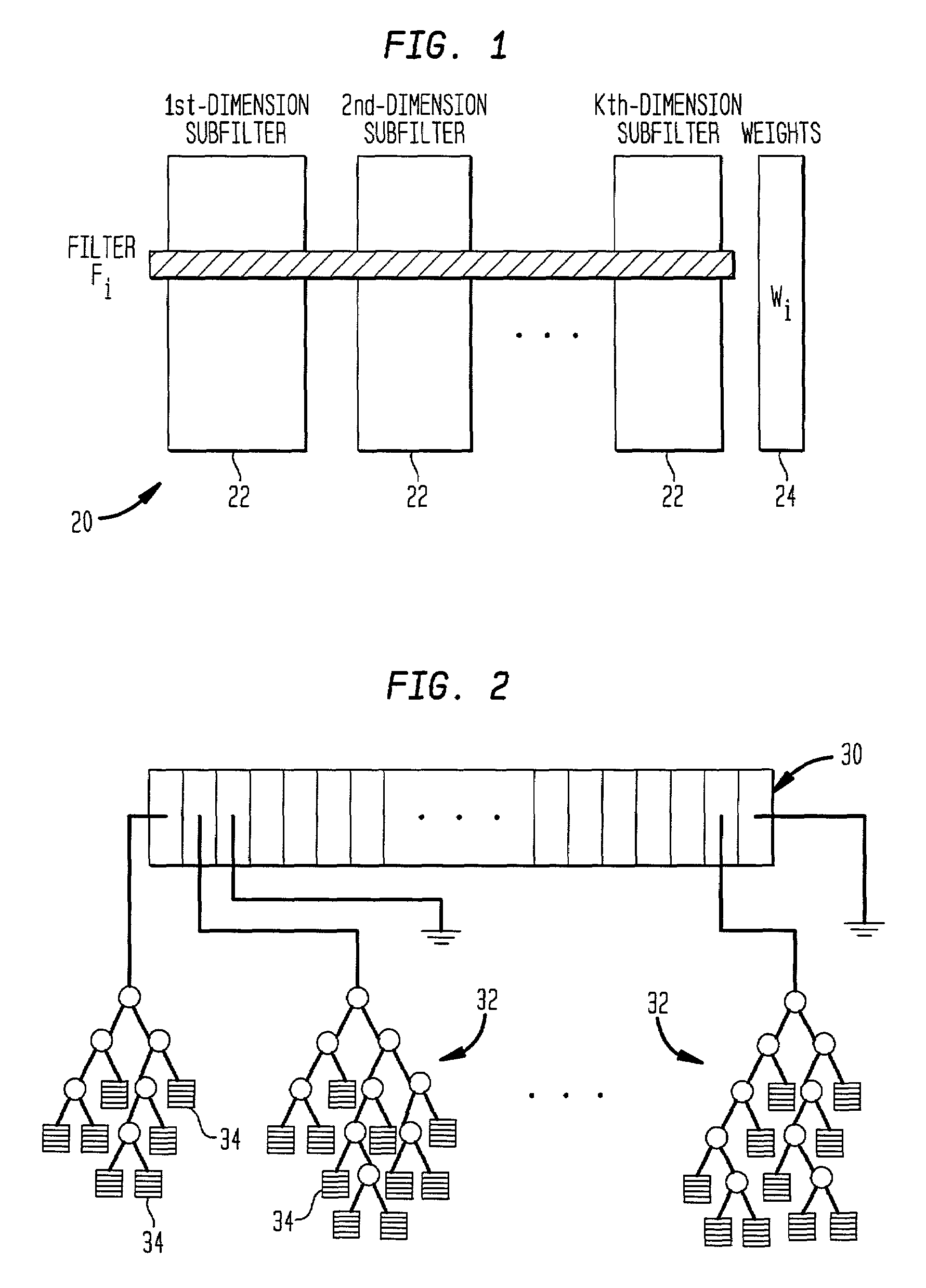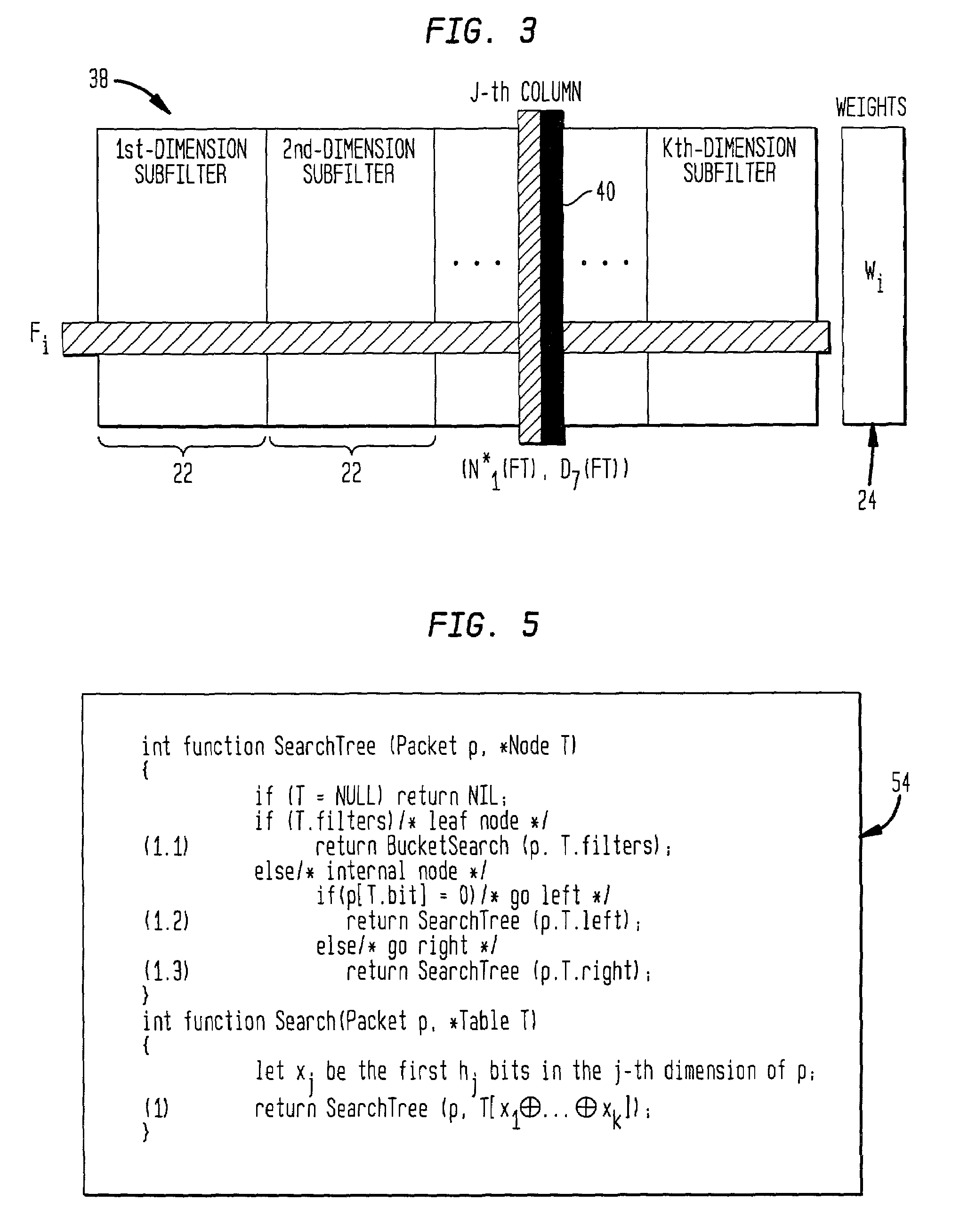Modular packet classification
a module packet and packet technology, applied in the field of packet classification, can solve the problem of high unbalanced use of individual filters, and achieve the effect of avoiding explosion
- Summary
- Abstract
- Description
- Claims
- Application Information
AI Technical Summary
Benefits of technology
Problems solved by technology
Method used
Image
Examples
Embodiment Construction
[0046]The detailed description is organized as follows. In Section 1, the packet classification problem is defined. In Section 2, the details of my algorithms are presented in accordance with a generic embodiment of the invention. In Section 3, implementation issues are examined. In Section 4, the framework for modeling filter tables is highlighted. In Section 5, experimental results are presented. In Section 6, our approach is compared to related work.
1. The Packet Classification Problem
[0047]From an algorithmic perspective, the IP packet classification problem is simply a concrete instance of the abstract classification problem. In the following, the latter is defined first and then it is specialized to IP in the next subsection.
[0048]1.1 Abstract Classification Problem
[0049]A basic filter f is an ordered pair (b, m) of binary strings of equal length. We call b the pattern, and m the mask. m indicates the significant bits in b for matching purpose. For example, the basic filter (1...
PUM
 Login to View More
Login to View More Abstract
Description
Claims
Application Information
 Login to View More
Login to View More - R&D
- Intellectual Property
- Life Sciences
- Materials
- Tech Scout
- Unparalleled Data Quality
- Higher Quality Content
- 60% Fewer Hallucinations
Browse by: Latest US Patents, China's latest patents, Technical Efficacy Thesaurus, Application Domain, Technology Topic, Popular Technical Reports.
© 2025 PatSnap. All rights reserved.Legal|Privacy policy|Modern Slavery Act Transparency Statement|Sitemap|About US| Contact US: help@patsnap.com



